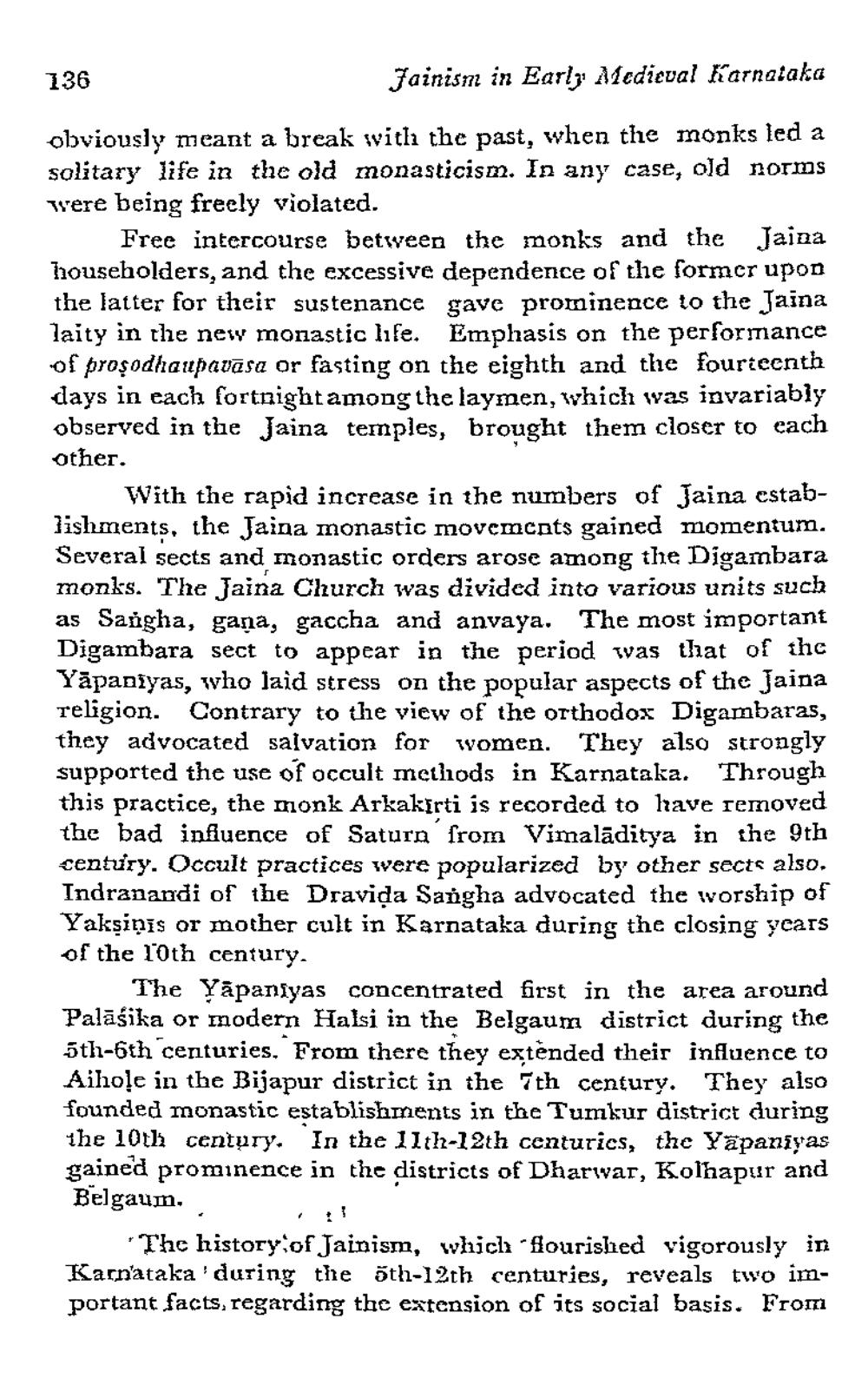________________
136
Jainism in Early. Medieval Karnataka
obviously meant a break with the past, when the monks led a solitary life in the old monasticism. In any case, old norms were being freely violated.
Free intercourse between the monks and the Jaina householders, and the excessive dependence of the former upon the latter for their sustenance gave prominence to the Jaina laity in the new monastic life. Emphasis on the performance of proşodhaupavasa or fasting on the eighth and the fourteenth days in each fortnight among the laymen, which was invariably observed in the Jaina temples, brought them closer to each other.
With the rapid increase in the numbers of Jaina estabJishments, the Jaina monastic movemcats gained momentum. Several sects and monastic orders arose among the Digambara monks. The Jaina Church was divided into various units such as Sangha, gana, gaccha and anvaya. The most important Digambara sect to appear in the period was that of the Yāpaniyas, who laid stress on the popular aspects of the Jaina Teligion. Contrary to the view of the orthodox Digambaras, they advocated salvation for women. They also strongly supported the use of occult methods in Karnataka. Through this practice, the monk Arkakirti is recorded to have removed the bad influence of Saturn' from Vimalāditya in the 9th century. Occult practices were popularized by other sects also. Indranandi of the Dravida Sangha advocated the worship of Yakşiņīs or mother cult in Karnataka during the closing years of the l'Oth century.
The Yapaniyas concentrated first in the area around Palāśika or modern Halsi in the Belgaum district during the 5th-6th centuries. From there they extended their influence to Aihole in the Bijapur district in the 7th century. They also founded monastic establishments in the Tumkur district during the 10th century. In the 11th-12th centurics, the Yapaniyas gained prominence in the districts of Dharwar, Kolhapur and
Belgaum. ,
:
The history of Jainism, which 'flourished vigorously in Karnataka' during the öth-12th centuries, reveals two important facts, regarding the extension of its social basis. From




